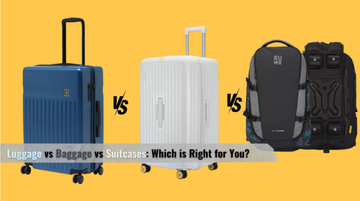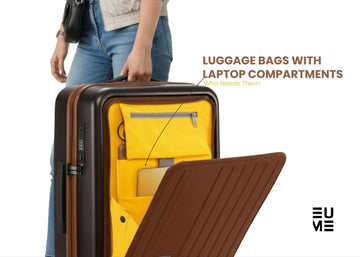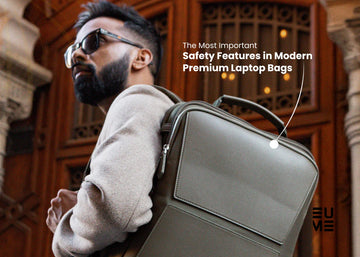When preparing for a trip, one of the most important decisions you'll make is choosing the right travel gear. Terms like luggage, baggage, and suitcase are often used interchangeably, but they have distinct meanings and uses. Understanding these differences can help you make smarter choices when shopping for travel companions. This comprehensive guide breaks down the nuances of these terms and offers practical advice to help you select the perfect travel gear.
Definition of Luggage
The term luggage refers to the physical containers used to carry personal belongings during travel. It’s a broad term that includes everything from suitcases to backpacks, duffel bags, and even garment bags. In British English, luggage is the preferred term, emphasizing the actual travel gear rather than its contents.
Types of Items Typically Considered as Luggage
Luggage comes in various forms to suit different travel needs:
-
Cabin Luggage: Compact and designed to fit in overhead compartments on planes. Ideal for short trips or as carry-on items. Check out EUME’s cabin luggage for stylish and durable options.
-
Check-In Luggage: Larger bags meant for longer trips, stored in the airplane's cargo hold. EUME’s check-in luggage offers spacious and sturdy designs.
-
Aluminium Cabin Bags: Sleek and durable, these are perfect for business travelers or those who want extra protection for their belongings. Explore EUME’s premium Aluminium Cabin.
-
Trunk Check-In Plus: Oversized luggage designed for extended vacations or family trips. For maximum storage, consider EUME’s Trunk Check-In Plus.
Definition of Baggage
The term baggage is often used interchangeably with luggage but has a slightly broader meaning. It refers not only to the physical containers but also to their contents. In American English, baggage is more commonly used than luggage. The term baggage also has metaphorical meanings, such as emotional or psychological burdens, but in a travel context, it strictly pertains to your belongings.
Definition of a Suitcase
A suitcase is a specific type of luggage designed primarily for organized travel. Typically rectangular in shape, it features a handle and often comes with wheels for easy mobility. Suitcases are ideal for carrying clothes, shoes, and other personal items in an orderly manner.
Types of Suitcases
-
Hard-Sided Suitcases: Made from materials like polycarbonate or aluminum, these offer excellent protection for fragile items.
-
Soft-Sided Suitcases: Made from fabrics like nylon or polyester, these are lightweight and flexible, making them easier to fit into tight spaces.
-
Expandable Suitcases: These feature zippers that allow you to increase storage capacity when needed.
Key Differences Between Luggage, Baggage, and Suitcase
Understanding the distinctions between these terms can help you make better decisions when packing or shopping for travel gear:
|
Term |
Definition |
Common Usage |
|
Luggage |
Physical containers used to carry belongings during travel |
British English; focuses on the gear itself |
|
Baggage |
Includes both the containers and their contents |
American English; broader meaning |
|
Suitcase |
A specific type of luggage designed for organized packing |
Universal; refers to rectangular bags with handles |
Regional Variations
-
In British English-speaking regions, "luggage" is the go-to term.
-
In American English-speaking regions, "baggage" is more common.
Practical Applications
-
Use "luggage" when discussing physical items like suitcases or duffel bags.
-
Use "baggage" when referring to both containers and their contents.
Choosing the Right Travel Companions
When deciding between different types of travel gear, consider your specific needs:
-
Trip Duration: For short trips, opt for compact cabin luggage; longer trips may require check-in luggage or larger options like trunks.
-
Travel Method: Air travelers should prioritize lightweight and durable options that meet airline requirements.
-
Storage Needs: If you’re carrying fragile items, hard-sided suitcases are ideal. For flexibility, soft-sided luggage works best.
-
Mobility Requirements: Look for wheeled bags or backpacks with ergonomic designs.
EUME offers an extensive range of high-quality travel companions that cater to all these needs.
Why EUME?
EUME World stands out with its innovative designs and premium-quality products tailored for modern travelers. Whether you're looking for compact cabin luggage or spacious check-in options, EUME has something for everyone. Their Aluminium Cabin bags combine style with durability, while the Trunk Check-In Plus offers maximum storage capacity without compromising on aesthetics.
Conclusion
Understanding the differences between luggage, baggage, and suitcase can simplify your travel planning process and help you choose the right gear for your needs. Whether you're packing light with cabin luggage or preparing for an extended trip with check-in baggage, selecting high-quality products ensures a hassle-free experience.
Ready to upgrade your travel gear? Explore EUME's cabin luggage, check-in luggage, and other premium options today!
FAQs
Is a suitcase the same as luggage?
No, a suitcase is one type of luggage specifically designed for organized packing.
When should I use "luggage" vs "baggage"?
Use "luggage" when referring to physical containers and "baggage" when discussing both containers and their contents.
Why do regions use "luggage" vs "baggage" differently?
The difference stems from regional language preferences—British English favors "luggage," while American English leans toward "baggage."
Can luggage include items other than suitcases?
Yes, luggage includes duffel bags, backpacks, garment bags, and more.
Is a duffel bag considered baggage?
Yes, duffel bags fall under both luggage and baggage categories depending on context.






















